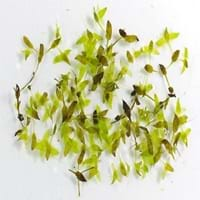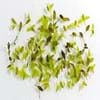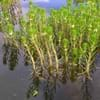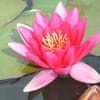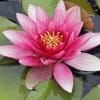Life Span
Perennial
Perennial
Type
Aquatics
Flowering Plants, Fruits, Herbs, Shrubs
Origin
North America, Europe, Asia
Australia, South America
Types
Lemna minor
Adams Elderberry, Black Beauty Elderberry, Black Lace Elderberry, Johns Elderberry, Nova Elderberry
Number of Varieties
Not Available
Habitat
Lakes, Ponds, sluggish streams and rivers
Farms, Homesteads, Near organic waste disposal
USDA Hardiness Zone
1-8
4-8
Sunset Zone
21,22
2a, 2b, 3a, 3b, 4, 5, 6, 7, 14, 15, 16, 17
Habit
Spreading
Upright/Erect
Flower Color
Non Flowering Plant
White
Flower Color Modifier
Not Available
Not Available
Fruit Color
Light Green
Purple, Red
Leaf Color in Spring
Green, Light Green
Green
Leaf Color in Summer
Green, Light Green
Green
Leaf Color in Fall
Green, Light Green
Yellow green
Leaf Color in Winter
Light Green
Not Available
Leaf Shape
Oblong-lanceolate
Compound
Plant Season
Spring, Summer, Fall
Early Spring
Sunlight
Full Sun, Partial Sun, Partial shade
Full Sun, Part sun
Type of Soil
Aquatic Plant
Loamy, Sandy, Well drained
The pH of Soil
Aquatic Plant
Slightly Acidic
Soil Drainage
Poorly Drained
Average
Bloom Time
Late Spring, Early Summer
Early Spring, Spring
Tolerances
Cold climate, Salt, Wet Site
Pollution
Where to Plant?
In Water
Ground
How to Plant?
Seedlings
Grafting, Seedlings
Plant Maintenance
Low
Medium
Watering Requirements
Plant grows in water
Requires regular watering, Use Mulches to help prevent water loss during hot and windy weather
In Summer
Aquatic Plant
Lots of watering
In Spring
Aquatic Plant
Moderate
In Winter
Aquatic Plant
Average Water
Soil pH
Aquatic Plant
Slightly Acidic
Soil Type
Aquatic Plant
Loamy, Sandy, Well drained
Soil Drainage Capacity
Poorly Drained
Average
Sun Exposure
Full Sun, Partial Sun, Partial shade
Full Sun, Part sun
Pruning
No need to prune
Cut or pinch the stems, No pruning needed in the early stages, Prune for shortening long shoots, Prune if you want to improve plant shape, Prune in winter, Prune ocassionally, Remove deadheads
Fertilizers
No fertilizers needed
All-Purpose Liquid Fertilizer
Pests and Diseases
Insects, Red blotch
Canker, Leaf spot, Powdery mildew, Stem spot, Tomato Ringspot Virus
Plant Tolerance
Cold climate, Salt
Drought
Flowers
Insignificant
Yes
Flower Petal Number
Not Available
Single
Foliage Texture
Fine
Medium
Foliage Sheen
Glossy
Matte
Allergy
no allergic reactions
Diarrhea, Nausea, Vomiting
Aesthetic Uses
Not Used For Aesthetic Purpose
Not Used For Aesthetic Purpose
Beauty Benefits
No Beauty Benefits
Not Available
Environmental Uses
Food for insects
Air purification
Medicinal Uses
Swelling
constipation, Fever, Heart problems, High cholestrol, HIV/AIDS, Nerve pain, swine flu
Part of Plant Used
Not Available
Flowers, Fruits
Other Uses
Not Available
Not Available
Used As Indoor Plant
No
No
Used As Outdoor Plant
Yes
Yes
Garden Design
Bog Garden, Water Gardens
Not Available
Botanical Name
LEMNA trisulca
Sambucus nigra
Common Name
Duckmeat, Frog's Buttons, Ivyleaf Duckweed, Star Duckweed
Elderberry
In Hindi
duckweed
Elderberry
In German
Entengrütze
Holunderbeere
In French
lentille d'eau
Sureau
In Spanish
Lenteja de agua
Saúco
In Greek
duckweed
Elderberry
In Portuguese
lentilha-d'água
Sabugueiro
In Polish
Rzęsa
Bez czarny
In Latin
duckweed
Elderberry
Phylum
Tracheophyta
Magnoliophyta
Class
Liliopsida
Magnoliopsida
Family
Lemnaceae
Adoxaceae
Clade
Angiosperms, Monocots
Angiosperms, Asterids, Eudicots
Tribe
Lemneae
Not Available
Subfamily
Lemnoideae
Not Available
Number of Species
Not Available
Difference Between Duckweed and Elderberry
If you are confused whether Duckweed or Elderberry are same, here are some features about those plants to help you choose better. Many people think that these two plants have the same characteristics, but one can see Duckweed and Elderberry Information and learn more about it. Fertilizers required for proper growth of Duckweed are No fertilizers needed, whereas for Elderberry fertilizers required are All-Purpose Liquid Fertilizer. Hence, one should know the basic difference between Duckweed and Elderberry if you are planning to have them in your garden to enhance its beauty.
<
Flowering PlantsImportance of Duckweed and Elderberry
Want to have the most appropriate plant for your garden? You might want to know the importance of Duckweed and Elderberry. Basically, these two plants vary in many aspects. Compare Duckweed and Elderberry as they differ in many characteristics such as their life, care, benefits, facts, etc. Every gardener must at least have the slightest clue about the plants he wants to plant in his garden. Compare their benefits, which differ in many ways like facts and uses. The medicinal use of Duckweed is Swelling whereas of Elderberry is constipation, Fever, Heart problems, High cholestrol, HIV/AIDS, Nerve pain and swine flu. Duckweed has beauty benefits as follows: No Beauty Benefits while Elderberry has beauty benefits as follows: No Beauty Benefits.
Compare Facts of Duckweed vs Elderberry
How to choose the best garden plant for your garden depending upon its facts? Here garden plant comparison will help you to solve this query. Compare the facts of Duckweed vs Elderberry and know which one to choose. As garden plants have benefits and other uses, allergy is also a major drawback of plants for some people. Allergic reactions of Duckweed are no allergic reactions whereas of Elderberry have Diarrhea, Nausea and Vomiting respectively. Having a fruit bearing plant in your garden can be a plus point of your garden. Duckweed has no showy fruits and Elderberry has no showy fruits. Also Duckweed is not flowering and Elderberry is flowering. You can compare Duckweed and Elderberry facts and facts of other plants too.
